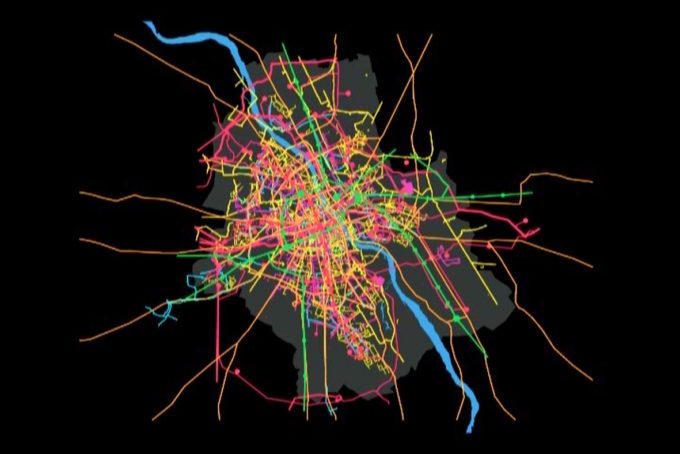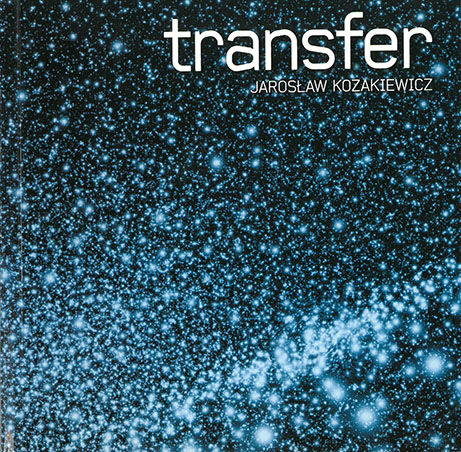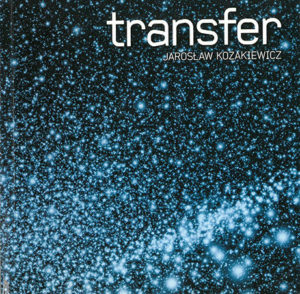
Transfer
Jarosław Kozakiewicz
Transfer, the title of Jaroslaw Kozakiewicz’s conceptual-architectural project at the Polish Pavilion, denotes the act of transporting something or someone from one place to another, the transfer of people, information, money, technology, but also the conveyance of an image from one surface to another, such as by tracing. ‘Transfer function’ is a term known to sociologists (a statistical method) as well as to architects designing, for instance, airport terminals.
The lead theme of Kozakiewicz’s project – the author is a sculptor and author of architectural projects – is Warsaw as an example of the contemporary culture of congestion, a city on which the post-1989 political, economic, and social transformation has left a strong and unique imprint. Warsaw is a city that is constantly subjected to criticism, a city of great construction projects, but at the same time of architectural and planning failures.
Transfer is inspired by Warsaw’s historical and cultural spatial axes, its lost architectural values, such as the Saxon axis, the King Stanislaw August axis, or the Praga axis. Jaroslaw Kozakiewicz proposes a new organic transfer network for Warsaw, partly overlapping with existing thoroughfares, but at the same time creating new connections and bringing back from oblivion the historical axes. The transfer network consists of a system of overpasses and performs three main functions:
1. connects green areas (city parks, suburban wooded areas), facilitating alternative commu-nication routes for pedestrians and cyclists without the need to use modern transit facilities such as cars, trams, or the metro. The system of overpasses makes it possible, for instance, to transfer from one park to another without the need to use a car;
2. connects places of particular interest, creating specific trails, e.g. of memory, art, education, entertainment, or leisure;
3. improves the transfer function of existing communication routes.
The planned overpass network overlaps symbolically with the city’s existing networks: with its transfer (bus, tram, train, metro), power, telephone, water, or gas networks. Short animated film presents fragments of the selected routes, e.g. a memory trail referring to the historical Saxon axis, leading towards the suburban Kampinoski Forest through historical sites, or a leisure trail connecting green areas.
The transfer network changes its form as it moves through the city, alternating, depending on local conditions, between open overpasses modelled upon park alleys; tube-like roofed overpasses, encouraging transfer in adverse weather conditions; and ground pedestrian trails, i.e. streets closed for vehicle traffic. The elevation of the overpasses varies depending on, for instance, the presence of tram cabling or the height of nearby buildings. Either open or roofed, from the bottom the over-passes reflect views of the city and ground traffic, making it possible to partly ‘dematerialise’ them.
As Michel de Certeau notices in his Practice of Everyday Life, in the contemporary Athens the mass transit facilities are called metaphorai. To get to work or return home, the city inhabitants use ‘metaphors’, or transfer means, such as the bus, car, or metro. Jaroslaw Kozakiewicz’s project offers criticism of the specific situation of a congested city, while retaining the ambiguity of a metaphor. The overpass network isn’t an immediately executable architectural project but rather a proposition suggesting that we change our ‘means of transport’, and thus also our viewing angles and the ways we experience the city, that we transfer not only from place to place but also in time.
- YEAR2006
- CATEGORY Biennale Architettura
- EDITION10
- DATES10.09 – 19.11
- COMMISSIONERAgnieszka Morawińska
- CURATORGabriela Świtek
About the author
Jarosław Kozakiewicz
Born 1961 in Bialystok. Lives and works in Warsaw. Sculptor, author of architectural projects, installations and set designs. Studied at the Academy of Fine Arts in Warsaw (1981-1985) and the Cooper Union for the Advancement of Science and Art in New York (1985-1988).



